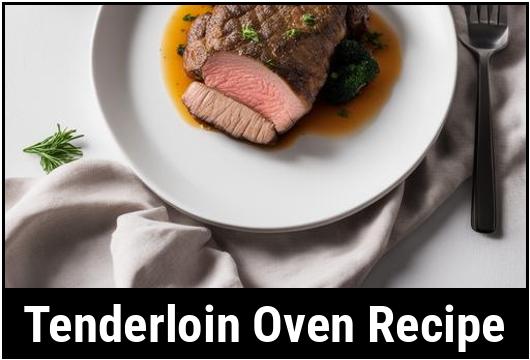
The Ultimate Tenderloin Oven Recipe Guide: Unleash The Magic Of Culinary Artistry
The tenderloin, also known as filet mignon, is considered the king of steaks. Renowned for its unmatched tenderness and buttery texture, it is often reserved for special occasions or fine dining experiences. Cooking the perfect tenderloin in the oven requires precision and knowledge of various factors. In this comprehensive guide, we will delve into the fascinating world of cooking tenderloin in the oven. From understanding food science to selecting the right cut, cleaning and preparation, important tips, checking for doneness and variations, we’re here to equip you with the knowledge needed to master this culinary masterpiece.
Understanding the Science Behind Perfectly Cooked Tenderloin
To truly appreciate the art of cooking tenderloin in the oven, it is essential to understand the science behind it. The tenderloin comes from a muscle group that is not heavily worked during the animal’s life, resulting in its tender nature. Additionally, this cut has minimal fat marbling, which contributes to its mild flavor. When cooked correctly, the tenderloin should be melt-in-your-mouth tender with a delicate taste.
Selecting the Right Cut: The Key to Sensational Flavor
When it comes to selecting a tenderloin for your oven recipe, quality is of utmost importance. Look for a cut that is bright red with a fine texture and minimal fat. You can opt for a whole tenderloin or individual portions, depending on your preference. It is often recommended to choose tenderloins that are at least 1.5 inches thick to ensure juicy and evenly cooked results. Additionally, consider purchasing grass-fed or organic tenderloins for a superior flavor profile.
Cleaning and Preparation: Setting the Stage for Culinary Brilliance
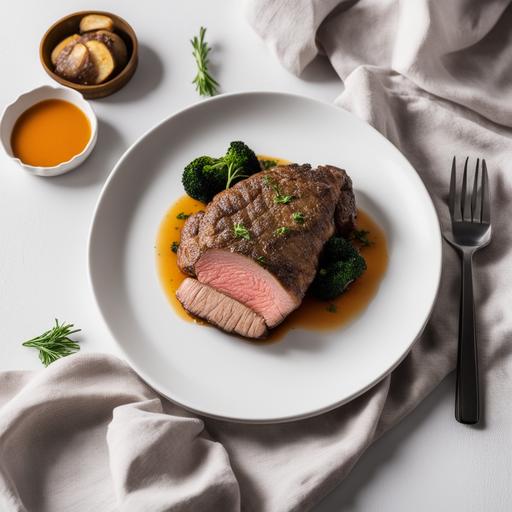
Before delving into the actual cooking process, it is essential to properly clean and prepare the tenderloin. Follow these steps to ensure a delightful and hygienic cooking experience:
-
Cleaning: Begin by patting the tenderloin dry using paper towels. This helps remove excess moisture, allowing for better browning during the cooking process.
-
Trimming: Trim any excess fat or tough silver skin from the tenderloin’s surface. This step enhances the presentation and overall texture of the final dish.
-
Marinating: While marinating might not be necessary for a tenderloin, it can elevate flavors and add an extra layer of complexity. If marinating, opt for a simple blend of olive oil, garlic, herbs, and spices. Allow the tenderloin to marinate for at least 30 minutes before proceeding with the cooking process.
Vital Tips for Mastering Tenderloin Perfection
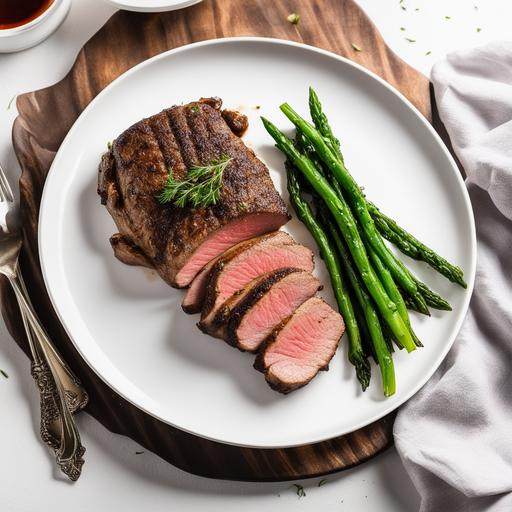
Cooking a tenderloin in the oven requires finesse. Here are some invaluable tips to help you achieve culinary excellence:
-
Preheating: Always preheat the oven to the desired temperature before cooking the tenderloin. This ensures even cooking and prevents the steak from becoming overdone or undercooked.
-
Resting Time: Allow the tenderloin to rest at room temperature for about 30 minutes before cooking. This step ensures even cooking throughout the steak.
-
Pan Choice: Choose an oven-safe skillet or cast-iron pan to sear the tenderloin before transferring it to the oven. This way, you can achieve a delightful crust while locking in the steak’s juices.
-
Seasoning: Keep the seasoning simple yet impactful. Coarse salt, freshly ground black pepper, and a hint of herbs or spices of your choice suffice to accentuate the natural flavors of the tenderloin.
-
Basting: During the cooking process, basting the tenderloin with butter, herbs, and garlic helps enhance the overall taste and richness.
Checking for Doneness: Achieving Culinary Perfection
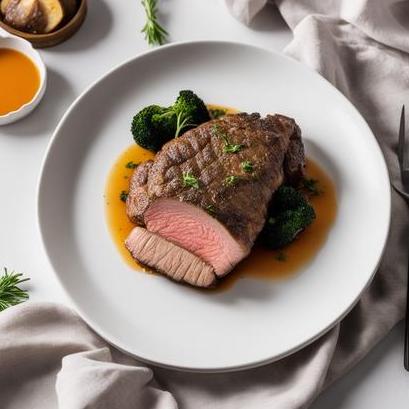
To determine the perfect level of doneness for your tenderloin, you can utilize three common methods:
-
Temperature Probe: Use an instant-read meat thermometer to check the internal temperature. For medium-rare, aim for 135°F (57°C), while medium should be around 145°F (63°C). Remember to insert the thermometer into the thickest part of the steak for an accurate reading.
-
Finger Test: Alternatively, you can perform a finger test to ascertain doneness. Press the center of the tenderloin gently with your finger. If it feels soft and resembles the texture of your cheek, it is medium-rare. Firmness indicates a higher level of doneness.
-
Color Indicator: Lastly, the color of the meat can also serve as a quick indicator. For medium-rare, aim for a rosy pink center, while medium should exhibit a slight hint of pink.
Indulge in Flavorful Variations: Elevate Your Culinary Creation
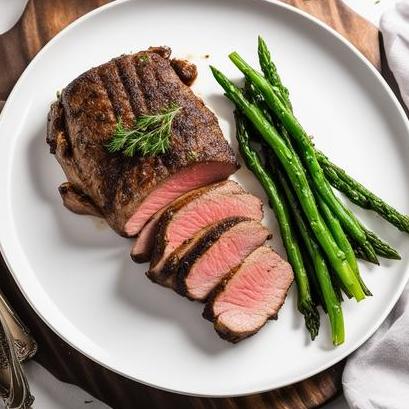
While a classic tenderloin oven recipe is an experience in itself, experimentation can lead to delightful variations. Here are a few suggestions to unleash your culinary creativity:
-
Blue Cheese Crust: Create a magnificent blue cheese crust by combining blue cheese, breadcrumbs, and herbs. Spread this mixture over the tenderloin before baking, lending a heavenly umami depth to your dish.
-
Mushroom Duxelles: Elevate your tenderloin by spreading a flavorsome mushroom duxelles over the meat before wrapping it in puff pastry. The combination of tenderloin and mushroom is a true match made in culinary heaven.
-
Bacon-Wrapped Tenderloin: Indulge in the magical fusion of smoky bacon and tenderloin. Wrap the tenderloin in strips of bacon before cooking to enhance both texture and flavor.
The Perfect Tenderloin Oven Recipe
Now that you’re equipped with the knowledge and tips required, let’s dive into an irresistible tenderloin oven recipe that will astound both friends and family. Remember, preparation and precision are key:
Ingredients:
-
1 whole tenderloin (about 3 pounds)
-
2 tablespoons olive oil
-
Coarse salt and freshly ground black pepper, to taste
-
4 tablespoons unsalted butter
-
4 cloves garlic, minced
-
Fresh herbs (such as thyme or rosemary), to taste
Instructions:
-
Preheat your oven to 425°F (220°C).
-
Pat the tenderloin dry using paper towels and trim any excess fat or silver skin.
-
Heat an oven-safe skillet or cast-iron pan over medium-high heat. Add olive oil and allow it to heat up.
-
Season the tenderloin generously with salt and pepper. Place it in the hot pan and sear on all sides, including the ends, to achieve a flavorful crust.
-
Reduce the heat to medium and add butter, garlic, and your chosen herbs to the pan. Continuously baste the tenderloin with the melted butter and aromatics for about 2 minutes.
-
Transfer the skillet or pan to the preheated oven and roast the tenderloin for approximately 20-25 minutes, or until it reaches your desired level of doneness.
-
Remove the tenderloin from the oven and cover loosely with foil, allowing it to rest for 10 minutes to retain its juices.
-
Slice the tenderloin into thick, succulent pieces and serve with your favorite side dishes or sauces.
Conclusion: A Journey into Culinary Excellence
Cooking a tenderloin in the oven is an exquisite art that requires skill, knowledge, and appreciation for gastronomic perfection. By understanding the science, choosing the right cut, cleaning and preparing with care, utilizing vital tips, checking for doneness, experimenting with variations, and following a proven recipe, you can craft a tenderloin dish that will forever be etched in the memories of those fortunate enough to partake. Embrace the magic of culinary artistry, and let the tenderloin in your oven become a masterpiece on your plate. Bon appétit!
Sources
FAQS On Tenderloin Oven Recipe
What Is A Tenderloin?
A tenderloin, also known as a filet, is a cut of meat from the loin of an animal, usually a beef or pork loin. It is known for its tender and lean texture.
How Do I Choose A Good Tenderloin For This Recipe?
When selecting a tenderloin, look for evenly distributed marbling of fat and a deep red color. Avoid any cuts that appear discolored or have excessive fat patches.
Do I Need To Marinate The Tenderloin Before Cooking?
It is not necessary to marinate the tenderloin, but you can if you prefer. The natural tenderness and flavor of the meat will be enhanced by a simple marinade of herbs, garlic, and oil.
What Is The Ideal Cooking Temperature For A Tenderloin In The Oven?
The ideal cooking temperature for a tenderloin in the oven is 425 degrees Fahrenheit. This allows for a crispy exterior while keeping the inside tender and juicy.
How Long Should I Cook A Tenderloin In The Oven?
The cooking time for a tenderloin will vary depending on the size and desired doneness. As a general guide, a 1 ½ inch thick tenderloin will need about 20-25 minutes in the oven for medium-rare, or 25-30 minutes for medium. It is important to use a meat thermometer to ensure the internal temperature reaches at least 145 degrees Fahrenheit for medium-rare, or 160 degrees Fahrenheit for medium. Let the tenderloin rest for 5-10 minutes before slicing and serving.


